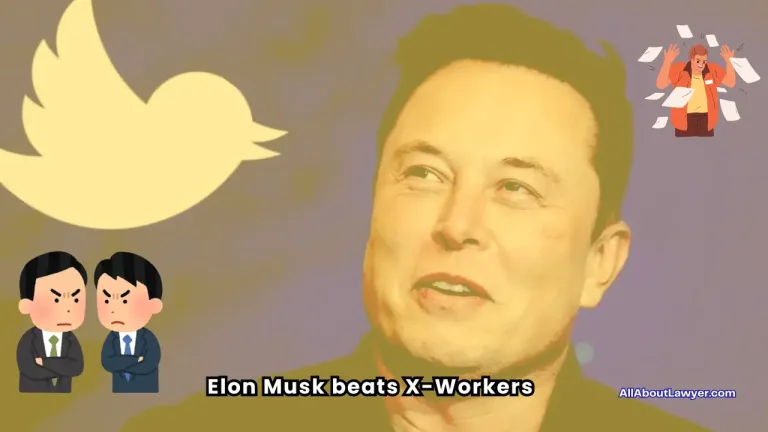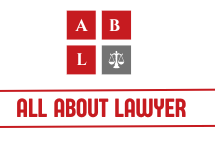Elon Musk beats Ex-Workers X Lawsuit Secures Landmark Victory in $500 Million Severance Lawsuit
In a significant legal triumph that has sent ripples through the tech industry, Elon Musk’s X Corp has emerged victorious in a high-stakes lawsuit brought by former employees. The case, which revolved around claims of unpaid severance following a massive workforce reduction, has been closely monitored by industry observers and legal experts alike.
Table of Contents
The Court’s Decision
On Tuesday, U.S. District Judge Trina Thompson delivered a ruling that sided with the tech mogul’s firm, dealing a blow to approximately 6,000 workers who were laid off after Musk’s acquisition of the company formerly known as Twitter in 2022. The judge determined that these employees were not entitled to severance payments under the Federal Employee Retirement Income Security Act (ERISA).
This Silicon Valley legal clash has set a significant precedent in the ongoing debate about labor practices in the tech sector, particularly in the context of corporate acquisitions and subsequent restructurings.
Background of the Elon Musk’s X Lawsuit Dispute
The origins of this legal battle can be traced back to the tumultuous period following Elon Musk’s $44 billion acquisition of Twitter in late 2022. In the wake of the takeover, the social media giant underwent substantial corporate downsizing, resulting in widespread layoffs. This workforce reduction, unprecedented in scale for the platform, left many former employees feeling short-changed and led to the filing of a collective lawsuit seeking $500 million in allegedly unpaid severance benefits.
The Plaintiffs’ Claims
At the heart of the employment termination disagreement was the contention by former X employees that they were entitled to more substantial severance packages than what they received. The lawsuit was jointly filed by 𝕏’s former head of total rewards, Courtney McMillian, and another ex-manager. They alleged that as senior managers, they were entitled to a severance package of six months base salary plus one week for each full year of experience.
The plaintiffs further claimed that less senior employees were entitled to two months base pay plus one week for each full year of service. However, the lawsuit alleged that some laid-off employees received no severance whatsoever, while others got just one month’s pay.
Musk’s Defense and Court’s Reasoning
In response to the allegations, Musk’s legal team mounted a robust defense. Judge Thompson noted in her ruling that after Musk’s takeover, Twitter management had notified employees that any worker leaving the company would receive cash payouts. This communication played a crucial role in the court’s decision.
Musk himself had previously stated on the platform that “everyone exited was offered 3 months of severance, which is 50% more than legally required.” This statement, along with the company’s notifications to employees, seemed to have influenced the court’s perspective on the dispute.
Broader Implications of the Verdict
This social network legal triumph has far-reaching implications not just for X Corp, but for the broader tech industry and corporate America:
1. Precedent Setting
This case may serve as a legal precedent for future disputes involving severance pay in the context of corporate acquisitions and restructurings.
2. Employment Practices
The verdict may influence how tech companies structure their employment contracts and severance policies going forward.
3. Acquisition Strategies
Future corporate acquirers may feel more confident in their ability to restructure workforces without being bound by all pre-existing commitments.
4. Employee Expectations
The case highlights the importance for employees to carefully review and understand their employment contracts, particularly regarding termination benefits.
Ongoing Legal Challenges
While this ruling marks a significant victory for Musk and X Corp, it’s important to note that several similar lawsuits filed by laid-off employees are still making their way through the court system. These cases involve a range of allegations, including:
– Targeting of women, minorities, and workers with disabilities for layoffs
– Failure to provide advance notice as required by federal and state laws
– Refusal to pay promised bonuses
Furthermore, four former top executives at X (formerly known as Twitter), including ex-CEO Parag Agrawal, have sued Musk for $128 million in combined unpaid severance. This separate lawsuit alleges that Musk falsely accused them of misconduct and forced them out in retaliation for their lawsuit against him, accusing him of attempting to renege on his offer to buy the company.

The Broader Context: Tech Industry Labor Practices After Elon Musk’s X Lawsuit
This lawsuit and its outcome must be viewed within the larger context of evolving labor practices in the tech industry. Silicon Valley and the tech sector at large have long been known for their dynamic, fast-paced work environments, but also for their generous compensation packages and employee benefits. However, recent years have seen increased scrutiny of tech companies’ labor practices, particularly in times of economic uncertainty or corporate restructuring.
The X Corp legal victory raises important questions about:
1. The balance between corporate flexibility and employee rights
2. The role of employment contracts in a rapidly changing industry
3. The responsibilities of acquiring companies towards existing employees
4. The potential need for updated labor laws that address the unique challenges of the tech sector
Looking Ahead Potential Appeals and Legislative Response
While the court’s decision marks a significant milestone in this case, it may not be the end of the legal journey. The plaintiffs have the option to appeal the decision, potentially taking the case to a higher court. This process could extend the legal battle and potentially lead to a different outcome.
Moreover, the high-profile nature of this case and its implications for worker rights could spark legislative interest. Lawmakers may consider whether current labor laws adequately protect employees in cases of corporate acquisitions and large-scale restructurings, particularly in the fast-evolving tech industry.
Conclusion
The victory of Elon Musk’s X in this $500 million lawsuit represents a significant moment in the intersection of tech industry practices, labor law, and corporate restructuring. While the immediate outcome favors the company, the broader implications of this case are likely to reverberate through the tech industry and beyond for years to come.
As the dust settles on this legal battle, both companies and employees in the tech sector will need to reassess their understanding of employment agreements, severance expectations, and the potential impacts of corporate acquisitions. The case serves as a stark reminder of the complex interplay between corporate needs and employee rights in an industry known for its rapid pace of change and innovation.
Ultimately, this legal decision may prompt a broader societal discussion about the nature of employment in the digital age and how best to balance the interests of companies, workers, and the broader economy in times of significant corporate transformation.
Related Articles For You:
What’s the Difference Between a Salary and an Hourly Wage?
How to File a Wage and Hour Complaint Report?
FAQs
Q: What was the main issue in the lawsuit against Elon Musk’s X?
A: The lawsuit centered around claims by former employees that they were owed $500 million in unpaid severance following large-scale layoffs after Elon Musk’s acquisition of Twitter (now X).
Q: Why did the court rule in favor of X Corp?
A: The court found that X Corp’s actions were within legal bounds, citing factors such as contract ambiguity, business judgment in times of financial challenge, compliance with labor laws, and alignment with industry severance practices.
Q: What are the implications of this verdict for the tech industry?
A: This verdict could set a precedent for how severance is handled in corporate acquisitions and restructurings. It may influence future employment contracts, acquisition strategies, and employee expectations in the tech industry.
Q: Can the former employees appeal this decision?
A: Yes, the plaintiffs have the option to appeal the decision to a higher court, which could potentially lead to a different outcome.
Q: How might this case affect future labor laws?
A: The high-profile nature of this case and its implications for worker rights could prompt lawmakers to review and potentially update labor laws, particularly as they apply to the tech industry and corporate acquisitions.
About the Author

Sarah Klein, JD, is a former employment attorney who has advised clients on wrongful termination, workplace discrimination, wage disputes, and employee rights. At All About Lawyer, she writes practical, legally sound guides to help workers understand labor laws and stand up for fair treatment at work.
Read more about Sarah
About the Author

Sarah Klein, JD, is a licensed attorney and legal content strategist with over 12 years of experience across civil, criminal, family, and regulatory law. At All About Lawyer, she covers a wide range of legal topics — from high-profile lawsuits and courtroom stories to state traffic laws and everyday legal questions — all with a focus on accuracy, clarity, and public understanding.
Her writing blends real legal insight with plain-English explanations, helping readers stay informed and legally aware.
Read more about Sarah
